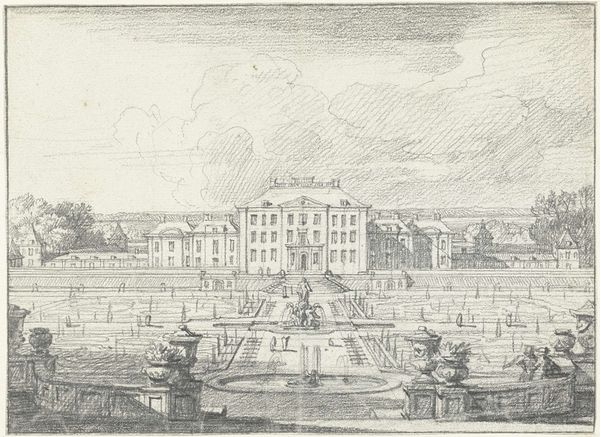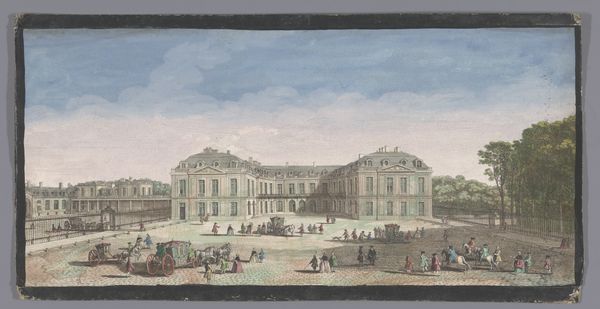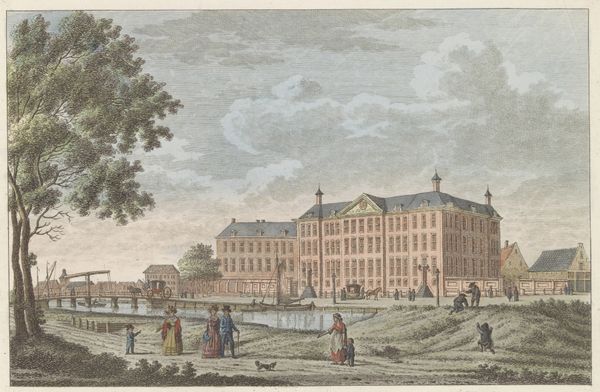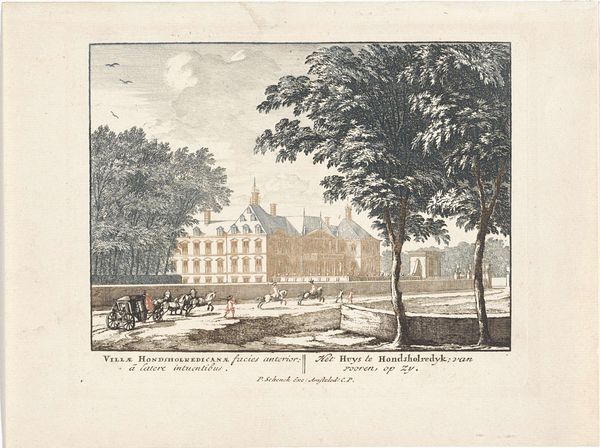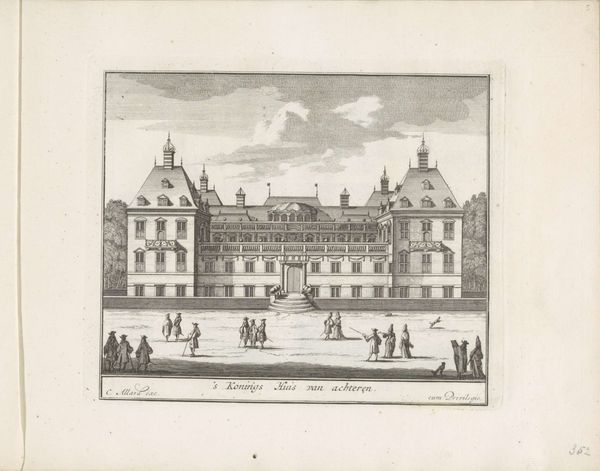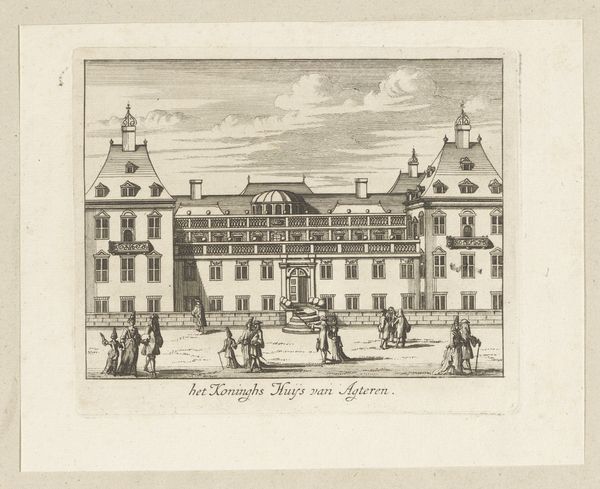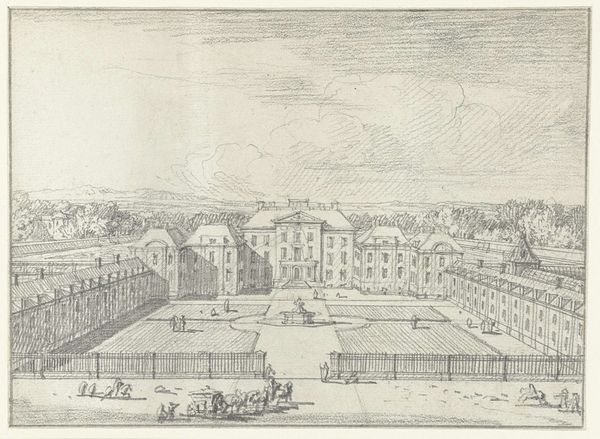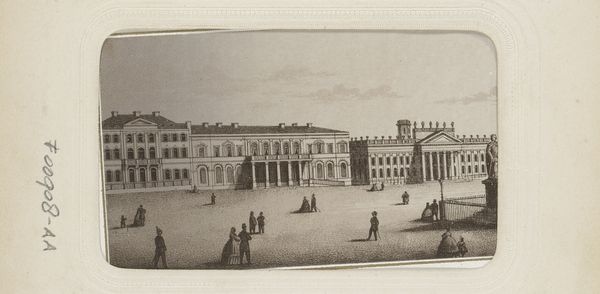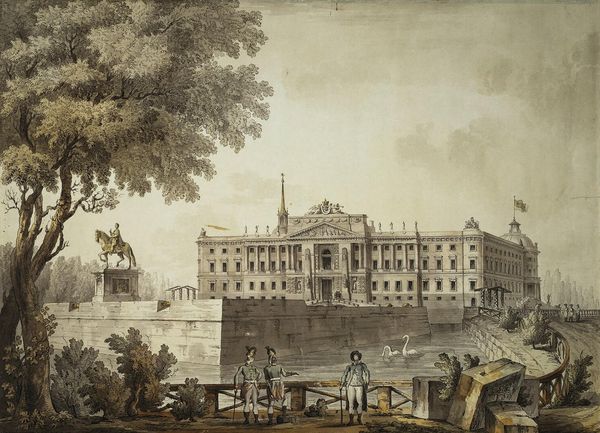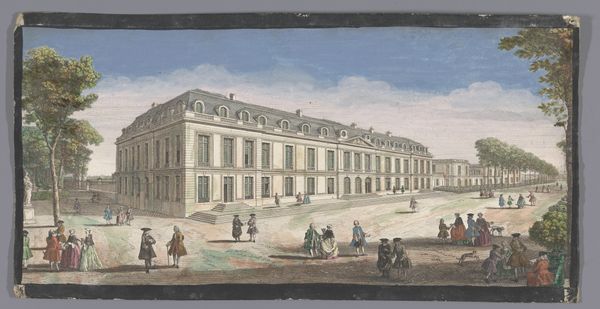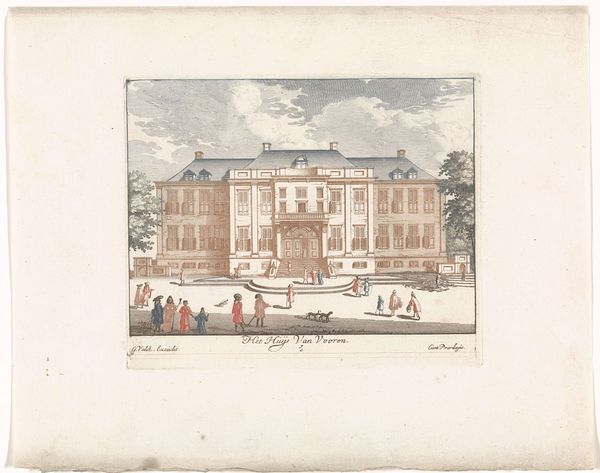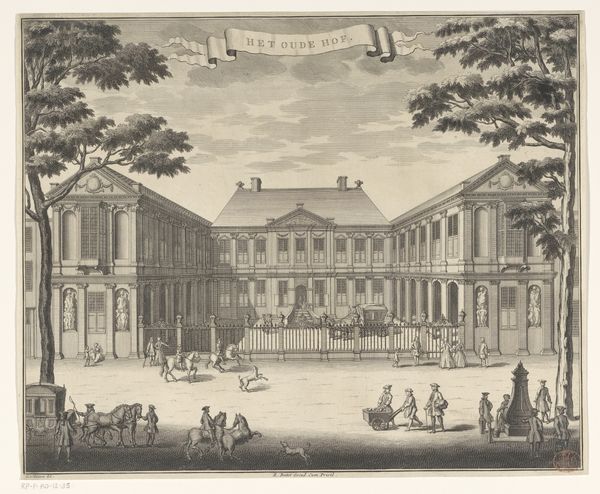
drawing, coloured-pencil, print, etching, architecture
#
drawing
#
coloured-pencil
#
baroque
# print
#
etching
#
landscape
#
etching
#
coloured pencil
#
cityscape
#
architecture
Dimensions: height 131 mm, width 163 mm
Copyright: Rijks Museum: Open Domain
Editor: So, here we have Jan van Call's "Gezicht op de achterzijde van Paleis het Loo," made around 1694 to 1697, using colored pencil and etching. I'm struck by how the ordered formality of the architecture contrasts with the delicate, almost casual rendering of the etching. How do you approach a work like this? Curator: Considering this print through a materialist lens, I focus on the labor and resources involved in its creation. Think about the production of paper, the mining of materials for pigments, and the craftsmanship required for both drawing and etching. The printing process itself, requiring a press and skilled labor, adds another layer of material complexity. Editor: That's fascinating. I tend to focus on the subject matter, the Palace, the social scene. Curator: Precisely, but where did those materials come from? The patronage system and the labor that built the palace are connected to the means that facilitated the creation of this print. Was van Call commissioned? How would he source his materials and get them processed? We see here, perhaps, a commercial opportunity as well, in the depiction and circulation of the seat of power. Editor: So, by understanding the "stuff" of the artwork – the physical materials and the work needed to create it, you understand the economics and societal powers at play in making the art? Curator: Absolutely. Consider the hierarchy of artistic practice, the perception of drawing versus painting at the time. Was etching seen as a lesser art form, a more easily reproducible commodity? Thinking about these factors helps deconstruct the traditional "high art" narrative. Editor: I never considered how much the means of production influences how we view art. Now I’m really seeing this piece differently. Thank you! Curator: Indeed! Hopefully you are finding art history is not just about who made it, but how and from what it's constructed!
Comments
No comments
Be the first to comment and join the conversation on the ultimate creative platform.
